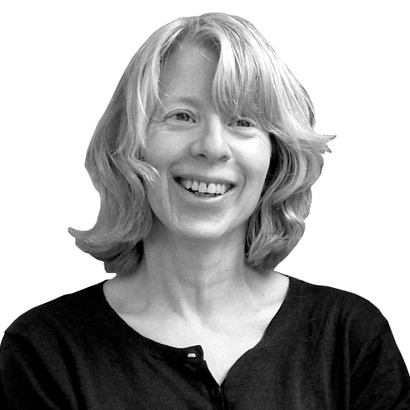Without meeting every charming, self-deprecating actor in Great Britain (and there are so very many in the land of the rose), would it be acceptable to simply declare Hugh Bonneville the most adorable, unassuming one of the bunch (senior division)?
Actually, considering the evidence of his winsome memoir, Playing Under the Piano: From Downton to Darkest Peru, the quondam Robert Crawley, seventh Earl of Grantham, is without peer in the field.
Those who want to charm Mr. Bonneville right back would be well advised to assure him that Babe is up there among their Top 10 movies. Otherwise, “I’m afraid we can never be friends,” he writes.
Such people might also want to refrain from comments like “You must be really glad that Downton Abbey came along when it did.” As if Bonneville, born Hugh Richard Bonniwell Williams, had been an IMDB nonentity before checking in at Highclere Castle. As if he hadn’t appeared with Julia Roberts in Notting Hill, with Kate Winslet and Judi Dench in Iris, and with Harold Pinter in Mansfield Park, to name just a few credits.

The son of a urologist and a nurse turned M.I.6 staffer (so it was learned after her death), Bonneville grew up in Blackheath, London, on a diet of Beyond the Fringe, Monty Python’s Flying Circus, and dress-up games.
When an actor friend of his parents came to stay for a few nights, young Hugh went to see him perform and was promptly knocked back on his heels. He was similarly transfixed when he attended a holiday party given by one of his father’s patients and Laurence Olivier was among the guests. At the end of the meal, the host and Olivier began singing music-hall ditties, with “Two Gigolos” as the big finish. A performance to remember.
Though Bonneville read theology at Cambridge, God and academics got increasingly short shrift as he became immersed in university stage productions. He gave himself three years to get an Equity card; he did it with plenty of time to spare.
Playing Under the Piano charts Bonneville’s career from his first professional jobs in the Regent’s Park Open Air Summer Theatre, where he understudied for Ralph Fiennes in A Midsummer Night’s Dream, and at the National Theatre, where, early in his tenure, he raised his arms with sufficient vigor during a flamenco dance rehearsal to push through a ceiling tile and inadvertently turn a lever, thus shutting off the water supply to the third floor of the building.
Bonneville is very good at conjuring the actor’s world in the hour, half-hour, and five minutes before the curtain goes up, and he’s equally skilled at capturing the tumultuousness of the rehearsal process—the unwieldy props, the misbegotten wigs, the actors ill equipped for their assignments. Of a weary, recovering alcoholic actor cast in the giddy School for Wives, Bonneville writes, “If you were to conclude, therefore, that he might not be the one to share our director’s interest in exploring the foothills of commedia dell’arte then you would be right.”
But he truly shines at laying out the indignities that are part and parcel of a performer’s life, chief among them auditions. Of trying out for commercials: “For a while I gave them my best shot, turning up at cattle calls … most of us looking like we were hovering at an STD clinic.”
He quickly became fluent in the lingua franca of rejection. When the powers-that-were insisted they’d be happy to cast an unknown in a low-budget movie that turned out to be Four Weddings and a Funeral, Bonneville understood that “it would at least need to be a known unknown,” he writes about a meeting he had with the director.

There are some longueurs here, and readers might reasonably grouse that Bonneville spends far too much time on his vexing experiences in Hollywood working on a quickly canceled sitcom and not nearly enough on the Downton Abbey years. Still, he comes through with some candid and touching reminiscences of Maggie Smith and a hilarious account of a dinner with Shirley MacLaine soon after her arrival on set.
“I had lovers all over the world,” MacLaine assured her castmates. “This one time, three in a day.”
“Oh, darling, you have been busy,” chipped in Smith.
“I know. I did all the work, my brother,” sighed MacLaine, referring to Warren Beatty, “got all the credit.”
Bonneville writes warmly of Roberts, who made certain her Notting Hill castmates were invited, all expenses paid, to the movie’s New York premiere. He writes with similar gratitude about Dench’s kindness when they appeared together at the National Theatre in 1987, in a so-called promenade production, with some audience members seated onstage. Clearly hers is an expansive nature.
“One night Judi spotted the director Howard Davies seated on the mound among the on-stage promenaders,” Bonneville writes. “She hurriedly scribbled a note in pencil—‘Fancy a shag’—scrunched it up, and, as she entered the scene, dropped it in his lap, her skirt brushing his shoulder as she passed.
“Toward the end of the scene, she glanced across to enjoy his reaction to her billet-doux. But far from grinning up at her, he was staring, bewildered, at the tatty bit of paper. Whoever the man was, she realized, he was not Howard Davies.”

Joanne Kaufman is a New York–based journalist and critic


